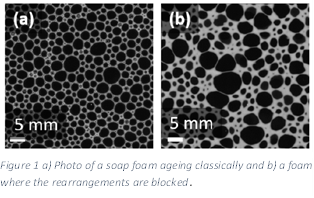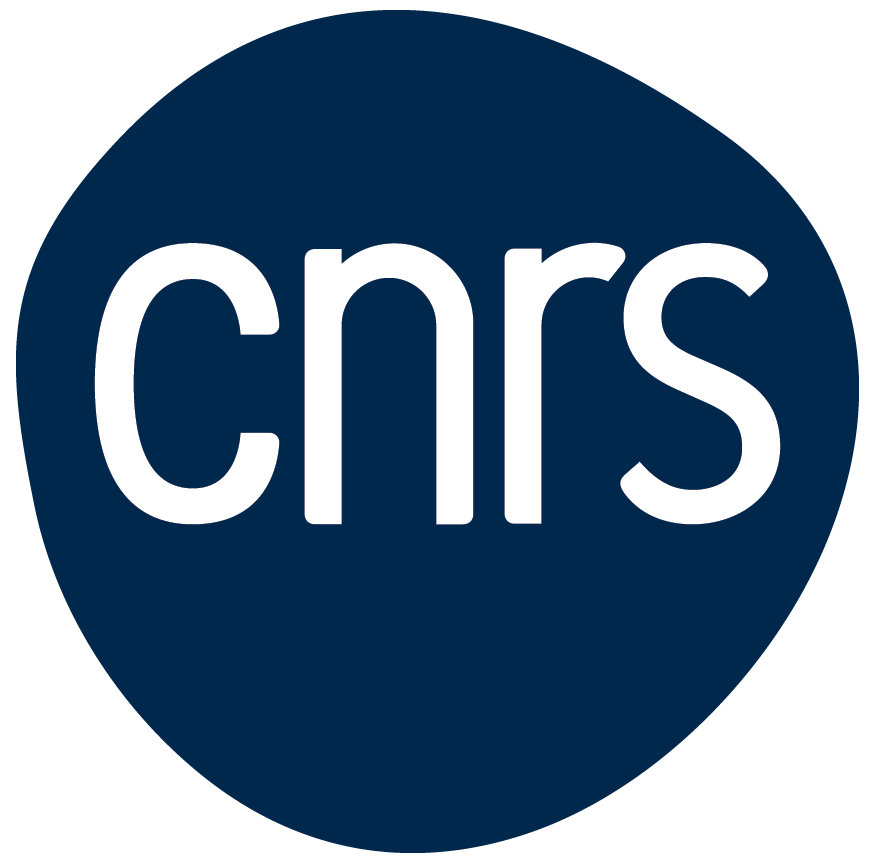Proposition de stage
Laboratoire Sciences et Ingénierie de la Matière Molle, (SIMM)
Adresse : ESPCI, 10 Rue Vauquelin 75005 Paris
Directeur du laboratoire : Jean-Baptiste d’Espinose
Contacts : Contacts : Paolo Edera (![]() ), Michel Cloitre (
), Michel Cloitre (![]() ), Anniina Salonen (
), Anniina Salonen (![]() )
)
Foams’ aging is connected to the evolution of bubble size through coarsening- the process in which gas transfers from smaller bubbles to larger ones. The rate of coarsening is typically controlled by the rate of gas diffusion through the joining films. However, there is another characteristic time-scale in the process, linked to the capacity of the bubbles to rearrange, which is linked to the viscosity of the liquids. In low viscosity soap solutions, the time to rearrange is much longer than the coarsening time, so that the coarsening rate is controlled only by gas diffusion. In this case the foam structures are in equilibrium throughout their ageing process. We have recently shown that when a yield stress fluid is used as the continuous phase, the rearrangement times are much longer than the coarsening times, and the foams evolve into very unusual structures [1, 2], as shown in the Figure.

In the quest for a strategy to finely control the properties of foams by controlling their ageing processes, we propose using well characterised polymer solutions as the foam continuous phase. In weakly associative polymer solutions, we can finely control the characteristic timescales of relaxation for example through changing polymer concentration, the length of the associative groups, or the length of polymers [3].
The aim of the internship is to take advantage of the control over relaxation timescales found in weakly associative polymer solutions to control the evolution of foams. In this way we could go from diffusion controlled to relaxation-controlled ageing, which is previously unexplored. The experimental internship will start with studying the generation of foam, whose evolution will be followed by imagery. The resulting structural evolution will be extracted through image analysis and compared to theoretical predictions on viscoelastic coarsening.
[1] C. Guidolin, et al., Nature Communications, (2023)
[2] C. Guidolin, et al., PRL (2024)
[3] A. Chaub (2024) Non-linear rheology of polymer gels with tunable associations. ESPCI
http://www.theses.fr/2024UPSLS034/document


